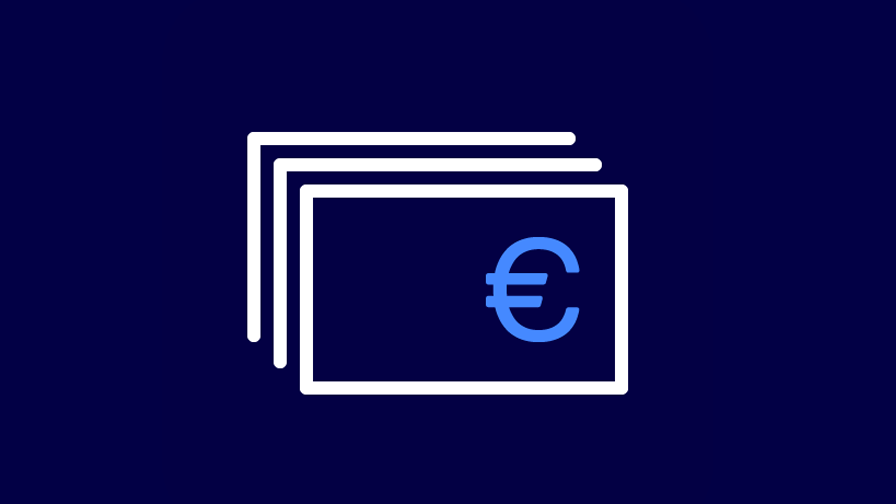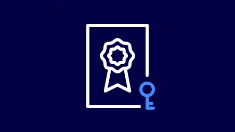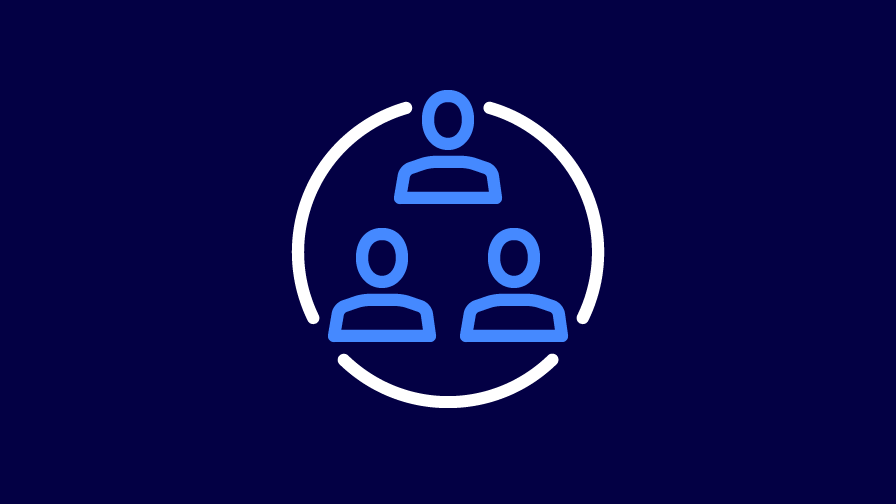
Modernising Registers
Published 9 September 2024
Germany’s register modernisation programme is a cornerstone of the country’s digital transformation. Its aim is to update and connect the many official databases that store information about individuals and organisations. Done right, this will reduce bureaucracy and make life easier – both for the public and for public authorities.
The Key to Successful E-Government
- Role: the importance of registers for citizens and authorities
- Efficient administration: only possible with modern registers
- Once-Only-Prinzip: das zentrale Ziel der Registermodernisierung
- Benefits: Less paperwork, more service: the benefits of register modernisation
- Implementation: how register modernisation is implemented in practice
- Legal framework: RegMoG and OZG 2.0
- Process: schedule and current status
- Partners: Bundesdruckerei as a strong partner in register modernisation
- Summary: conclusion and outlook
- FAQ: frequently asked questions
Why registers matter – for citizens as well as public authorities
We’re used to thinking of registers as something in a book: an alphabetical index that helps you quickly find what you need. However, there are also numerous registers in public administrationwhich store data on individuals and organisations – such as
- civil status details,
- registered addresses,
- vehicle number plates, and
- company records.
On the contrary, the register landscape in Germany is fragmented, inconsistent and prone to errors. Across Germany, there are over 350 different types of registers and administrative databases including population registers, civil status registers, and the commercial register, as well as smaller specialised databases such as the emission register for medium-sized combustion plants or the fisheries register.
Due to the federal structure and decentralised register landscape, many of these registers are maintained independently by local authorities; for example, there are more than 5,000 individual population registers in Germany. This leads to redundancies in data across state borders, for instance when people move from one state to another.
Interregional exchange and reconciliation? This has often been lacking in the past due to the high level of manual effort involved. As a result, administrative processes may be delayed or disrupted because records are maintained with varying quality and, consequently it is not always possible to clearly match individuals across different registers. This is the case, for example, if core personal data is entered differently or is out of date in some systems.
Efficient administration requires modern registers
The recently amended Online Access Act (OZG Amendment Act)states that public services in Germany should be fully digital in the future. This would spare citizens from unnecessary visits to administrative offices and make processes more efficient. Such digitilisation can only succeed if administrative registers are synchronised and interconnected. The modernisation of the register landscape is therefore essential to ensure it is fit for the future.
Both the general public and public authorities will benefit from this. Modern digital registers pave the way for straightforward online applications and faster services – and improved data protection standards.
Core objective: The Once-Only Principle
At present, many people in Germany are required to submit the same documents and information repeatedly when dealing with different authorities. Register modernisation aims to put an end to this. Once data is stored by a public authority, it should not have to be provided again. Instead, with the applicant’s consent, all relevant authorities should be able to access the necessary data directly. This approach is known as the Once-Only Principle and forms a central part of register modernisation.
How the Once-Only Principle Works in Practice
To implement this principle, all citizens will be assigned a consistent identifier across all registers. The chosen solution is the 11-digit tax identification number (Tax ID), which is already assigned to every resident of Germany. The Register Modernisation Act (RegMoG) refers to this as a “cross-register identity management”, with the Tax ID serving as the central identifier.
Together with a small set of core data – such as name, date of birth and gender – this will enable the synchronisation and reconciliation of registers. According to RegMoG, this will initially apply to 51 registers, including the vehicle register and the population register, which are to be modernised by 2028.
Less paperwork, more service: The benefits of register modernisation
Updating Germany’s register infrastructure brings clear advantages for everyone involved. It is one of the cornerstones of the administrative digitalisation in Germany and a step towards a more modern state.
Networked registers can also be beneficial to scientific research. The data they contain has the potential to provide insights into social and economic structures and support evidence-based policymaking.
Another goal of register modernisation is the introduction of a digital census, a recurring survey on living and working conditions. If this data were collected digitally from registers, there would no longer be a need for labour-intensive, time-consuming and costly household surveys. According to the Federal Ministry of the Interior and Community (BMI), this could save more than one billion euros.
How Register Modernisation Will Be Implemented
The vision of a modern, digital register infrastructure is promising. However, achieving it will require substantial work. According to the Federal Government, four main steps are necessary:
The technical core of register modernisation is the required digital infrastructure, which must build on existing applications while also offering new functionalities. This includes, for example, the XNachweis standard – a cross-sector, uniform, and highly stable IT standard for retrieving evidence from registers. This standard is crucial for implementing the Once-Only Principle in Germany and for connecting national registers to the European system.
The key technical foundation for this is NOOTS – the National Once Only Technical System – which enables the digital retrieval of evidence. NOOTS consists of several components, including an efficient and secure identity and access management system for both public authorities and individuals, as well as an intermediary platform. This intermediary platform is intended to serve as an interface that facilitates the connection between national entities and the European Once Only Technical System (EU-OOTS).
The constitutional, administrative, and data protection requirements are being considered from the very beginning of register modernisation. Particular emphasis is placed on ensuring a high level of data protection. One key condition is that any data processing must be based on a clear legal foundation. Citizens should be given appropriate control mechanisms — for example, through a privacy dashboard that allows them to see at any time which authority is requesting access to which information, and for what purpose.
Operating NOOTS in particular requires a complex legal framework, which is currently being negotiated as part of a new intergovernmental IT treaty.
To ensure that the digitalisation of all administrative processes is sustainable in the long term, the smooth and uninterrupted operation of the technical infrastructure at the federal, state, and municipal levels is essential. This infrastructure must meet several key requirements:
- Robustness
- Reliability
- Interoperability
- Security
- Legal compliance
- Future viability
This also means that different administrative sectors and levels must be able to work together effectively at all times. In addition to clearly defined areas of responsibility and accountability, this requires transparent decision-making, change management, and oversight processes.
Responsibility for the concrete implementation of register modernisation lies with the Central Steering Committee for Register Modernisation appointed by the Federal IT Planning Council. Leading roles are held by the Federal Ministry of the Interior and Community (BMI) and the federal states of Bavaria, Hamburg, North Rhine-Westphalia and Baden-Württemberg. The programme is supported by institutions such as the Federal Office of Administration (BVA), which acts as the register modernisation authority, as well as KoSIT (the Coordination Office for IT Standards), the Federal IT Cooperation (FITKO), and the Federal Commissioner for Data Protection and Freedom of Information (BfDI).
Legal framework: RegMoG and OZG 2.0
The legal basis for the implementation of register modernisation is the Register Modernisation Act (RegMoG), which came into force in mid-2023. It lays the foundation for implementing the Once-Only Principle and using the tax identification number as a universal identifier.
Because the modernisation of the register landscape is essential to digital administration, the projects from RegMoG and OZG 2.0 (OZG Amendment Act) need to be even more closely aligned. OZG 2.0 sets out the step-by-step digitalisation of administrative services in Germany, which can only be carried out effectively and purposefully if modern registers are in place.
EU-Level Integration via the Single Digital Gateway
At the European level, the regulation on the Single Digital Gateway (SDG Regulation), adopted in 2018, is also relevant. It aims to establish a unified digital access point for public services across the EU. As part of this, the existing “Your Europe” portal will be connected with the national portals of all Member States. In Germany, the Federal Portal is the central point of access for administrative services provided by the federal government, the states, and local authorities.
The SDG Regulation obliges member states to provide certain administrative services digitally across borders and to exchange supporting documents throughout the EU. This exchange will take place via the interface between the EU Once Only Technical System (EU-OOTS) and the National Once Only Technical System (NOOTS). As such, register modernisation is not only a national objective – it is also a European legal obligation.
Timeline and current status
The Register Modernisation Act stipulates that 51 administrative registers are to be modernised and interconnected by 2028. The first step is to modernise the TOP 18 registers by 2025, including:
- the population register,
- the Central Register of Foreigners, and
- the vehicle register.
In addition to technical upgrades and interlinking of registers, specialised administrative processes also need to be adapted. This includes updating subject-specific IT systems, public service portals and the privacy dashboard to interface with NOOTS. It is also essential to integrate further data ecosystems – such as health – to realise the full benefits of modern infrastructure across different areas of life.
Bundesdruckerei as a Strong Partner in Register Modernisation
As a federal technology provider, Bundesdruckerei plays an active role in the development and operation of registers. It focuses in particular on how registers must be adapted for integration into modern infrastructures. Bundesdruckerei has already developed and currently operates a number of key registers, including:
Anyone wishing to donate their organs can document their consent unequivocally in this register. Patients can specify in the register whether and, if so, which organs they are willing to donate.
This register records care workers in the ambulatory care sector and assigns each individual a lifelong, unique employee ID – helping to streamline billing processes.
ELEFAND is the Foreign Office’s crisis preparedness list. German citizens residing abroad can register here so that embassies and other authorities can contact them in crisis situations – such as natural disasters, outbreaks of war, or pandemics.
In addition to developing and operating these systems, Bundesdruckerei also contributes to working groups and consultations on implementing the OZG and building the NOOTS infrastructure. It is involved in several pilot projects exploring the technical feasibility of connecting registers to national systems such as the Federal Portal. Bundesdruckerei also develops customised components to support individual register implementation, including identity management solutions.
A modern and high-performance register landscape requires the seamless cooperation of a wide range of different stakeholders and technical subsystems. Register modernisation is a core component of Germany’s state identity infrastructure, alongside digital identity (e.g. via the EUDI Wallet) and digital access to public services (e.g. via the Federal Portal). Bundesdruckerei ensures that these three elements are developed with their interdependencies in mind, which can significantly increase the added value in project implementation.
Conclusion and Outlook
Register modernisation is one of the most important sub-projects on the path to digitalised administration. But delivering it requires close coordination between a wide range of actors and technical systems. Without cooperation between stakeholders at federal, state and municipal level, a modern and efficient register infrastructure will not be possible.
A key objective is to implement register modernisation in a way that is compliant with data protection regulations, efficient and timely. As a solution partner to public administration, Bundesdruckerei is well-positioned to make a valuable contribution.
Frequently Asked Questions
A register is a database maintained by public authorities or affiliated institutions, updated on an ongoing or regular basis.
Register modernisation means not only digitising the most important administrative databases in Germany but also synchronising them. The goal is that data only needs to be stored once (Once-Only Principle). Authorised authorities can then, with the citizen’s consent, access the relevant data digitally. This promotes data economy and data quality by avoiding data redundancies and enables more efficient processes in administration.
The Register Modernisation Act (RegMoG) came into force in August 2023. It sets out the legal basis for the Once-Only Principle and for using the tax ID as a universal identifier for administrative services.
The main objectives are to make public administration more efficient and user-friendly, reduce bureaucratic effort and costs, and facilitate the cross-border use of public services within the EU. Register modernisation also enables better use of register data for scientific purposes and will support the transition to a leaner, fully digital census.
NOOTS is the technical framework for retrieving digital evidence from modern registers. It allows for simplified data exchange between administrative bodies requesting verification and the authority providing verification within the administration. It combines technical components, interfaces, and standards with organisational and legal regulations.








